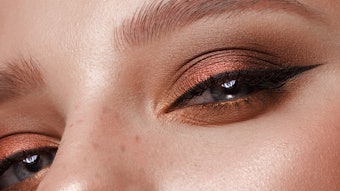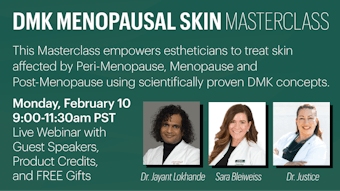
As the demand for laser treatments increase, so does the demand for qualified professionals. Following these five steps could be the difference between a safe or harmful treatment as well as an effective or non-effective treatment.
1. Be Knowledgeable on Anatomy, Physiology and Light Physics
It is imperative that anyone performing laser treatments has a thorough understanding of anatomy and physiology of the skin and hair. This will help the technician when it comes to tissue interaction, a term used to describe how light energy affects the skin.
Laser physics is equally important to understand. Although most of the newer lasers have presets according to skin type and condition, the provider needs to recognize what the settings mean. A few examples of terminology that must be understood are:
- Fluence: the amount of energy delivered per cm2
- Absorption coefficient: how much of a particular target is absorbed by a specific wavelength
- Pulse-width: the amount of time the energy is delivered.
The settings are determined based upon the client’s Fitzpatrick skin type, as well as the color, density and perceived depth of the target.
2. Perform a Thorough Consultation
Prior to any treatment, a thorough consultation is needed to ensure that the patient is a good candidate and has realistic expectations. The patient must understand that the treatment is laser hair reduction, not removal. This series of treatments will significantly reduce the amount of hair growth for a period of seven months to a year, which means patients typically need touch-up treatments once or twice a year.
It must also be understood that sticking to the timeframes between treatments will obtain the best results. This is because the light only affects the hairs in the anagen stage of hair growth, and the amount of hair in that stage differ per area of the body. As always there are contraindications for laser hair reduction, including but not limited to, pregnancy/nursing, cancer, autoimmune disorders, prone to keloid scars, suspicious lesions, use of Isotretinoin six months prior, epilepsy and the use of photosensitizing drugs.
In addition, those with tanned skin or who have recently used self-tanners need to be back to baseline for safe, effective results. There are certain lasers that can be used when the settings are adjusted for skin that is slightly tanned, but it is best to wait until the tan has subsided.
It’s important to communicate with the patient possible reactions, like transient edema/swelling, perifollicular erythema/redness, bruising or post-inflammatory hyperpigmentation. At this point, when the patient understands the risks and benefits to the treatment, a consent form should be signed.
3. Have a Safe Treatment Room
Lasers are medical devices that can be extremely dangerous in the wrong hands, as well as in an unsafe treatment area. The area should be clear of flammable materials, including alcohol and acetone, which should be put away following use. The room should be free of mirrors to minimize the chance of specular reflection, which can cause burns, fires or extreme damage to the eyes. Windows should be covered with non-flammable material. Laser safety signs should be on the door, facing out when the laser is in use and facing in when it is not. The floors should be clear of water and wires on the device should not be frayed.
Most important is the use of eye protection. The biggest mishap when it comes to safety is the improper use of eyewear. Protective laser safety glasses must be worn by everyone in the room and cover the specific wavelength to be used. Glasses and/ or goggles should be in good condition with side shields to provide full coverage for both the technician and patient.
Sanitation is also a key factor, and it is the technician’s responsibility to ensure all surfaces and equipment/handpieces are disinfected before each use. For more information, there are several courses that cover laser safety guidelines; most institutions follow ANSI, The American National Safety Institute for Lasers.
4. Prepare the Patient
To begin, the area must be assessed for any open wounds or lesions. If there are open wounds in the area, the treatment should be rescheduled when the condition has cleared up. If there are raised moles, tattoos or other marks with heavy pigment, the technician must avoid those areas to prevent the chance of burns.
Once the skin is assessed, the hair should be evaluated to give patients realistic expectations. The more contrast between the hair and the skin will most often deliver the best results. Patients with red, blonde and/or gray hair will likely not get results due to the lack of pigmentation; although some manufacturers have devices combining other technologies to treat hair in these color ranges.
Once the patient is cleared for treatment, the skin must be thoroughly cleansed with alcohol to remove any creams, lotions, deodorant and/or perfumes as these products can have ingredients that are flammable. Photos of the treatment area should be taken at each visit so improvement is documented and monitored.
Now it is time for the treatment, but a test-patch must be done first to ensure there is no unforeseen adverse reaction such as extreme redness, swelling, discoloration or burning. Find a conspicuous area that is the same color and has the same exposure to the sun as the area being treated, perform a few pulses with the laser and wait several minutes to see if any if the above abnormalities arise, on darker skin types (Fitzpatrick V and VI) it may be recommended by the manufacturer to wait up to 24 hours.
5. Provide the Treatment
The technician should now know expectations of what the patient wants, including areas to be treated. For instance, with the bikini area, it can differ greatly. Some patients want to remove all the hair from the bikini area, others just want the bikini line removed. The treatment should be done carefully and precisely. Most laser hair reduction devices call for an overlap to avoid missing hairs.
It can be extremely frustrating for a patient that has undergone a series of treatments to have to repeat the process just to treat an area that should have been treated in the first place. During the treatment, it is important to continually assess the skin and ask the patient for his or her feedback.
Slight erythema and perifollicular edema (a red ring around the hair follicles) is normal. Excessive pain or redness, blistering, and swelling are all signs of a possible adverse reaction, and the treatment should be stopped immediately. Thermal burns may have occurred, and the skin should be assessed by a medical professional, as this could cause post-inflammatory hyperpigmentation, hypopigmentation or even scars.
Patient satisfaction and safety are essential for growth, and giving extra attention to these five details will always pay off in the end.











